
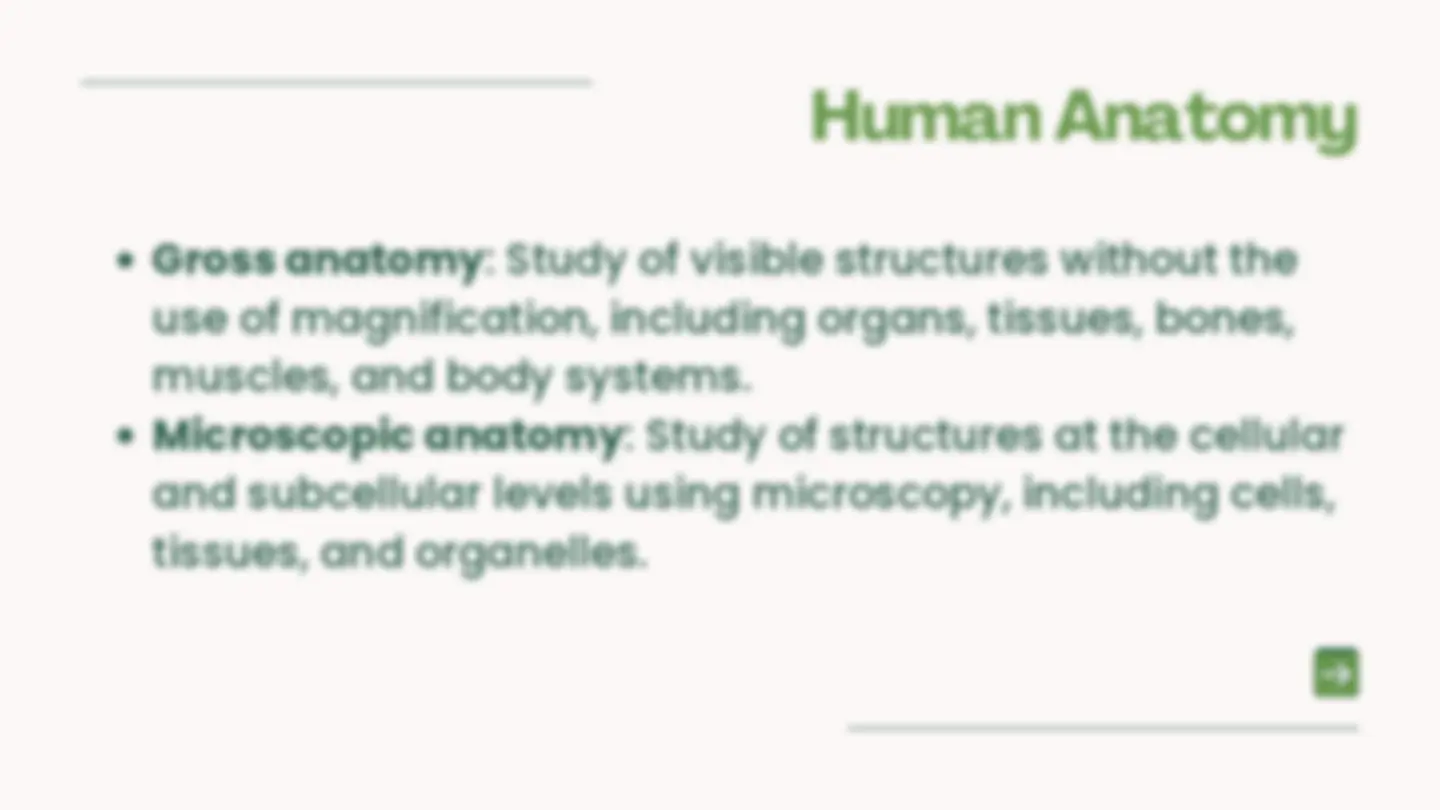
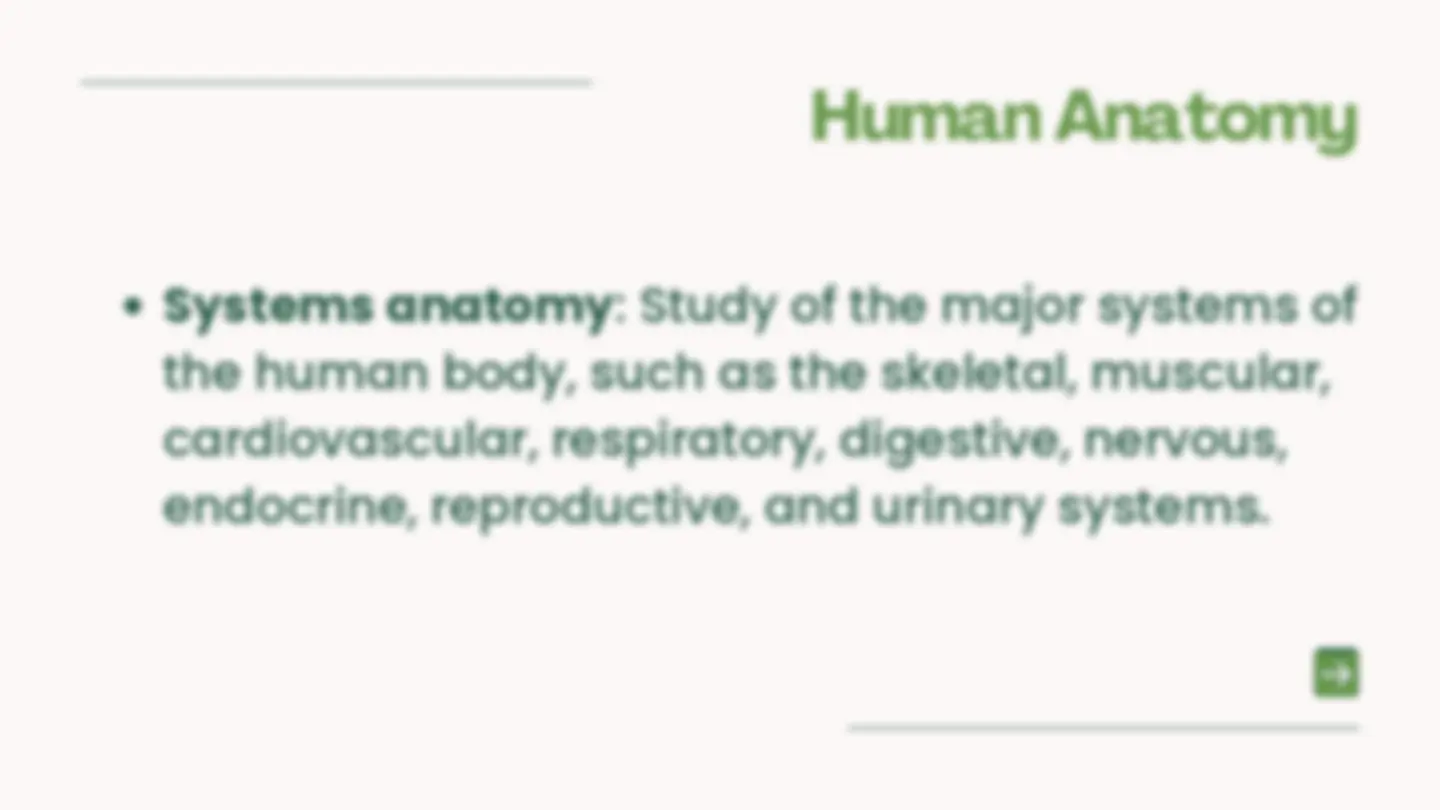
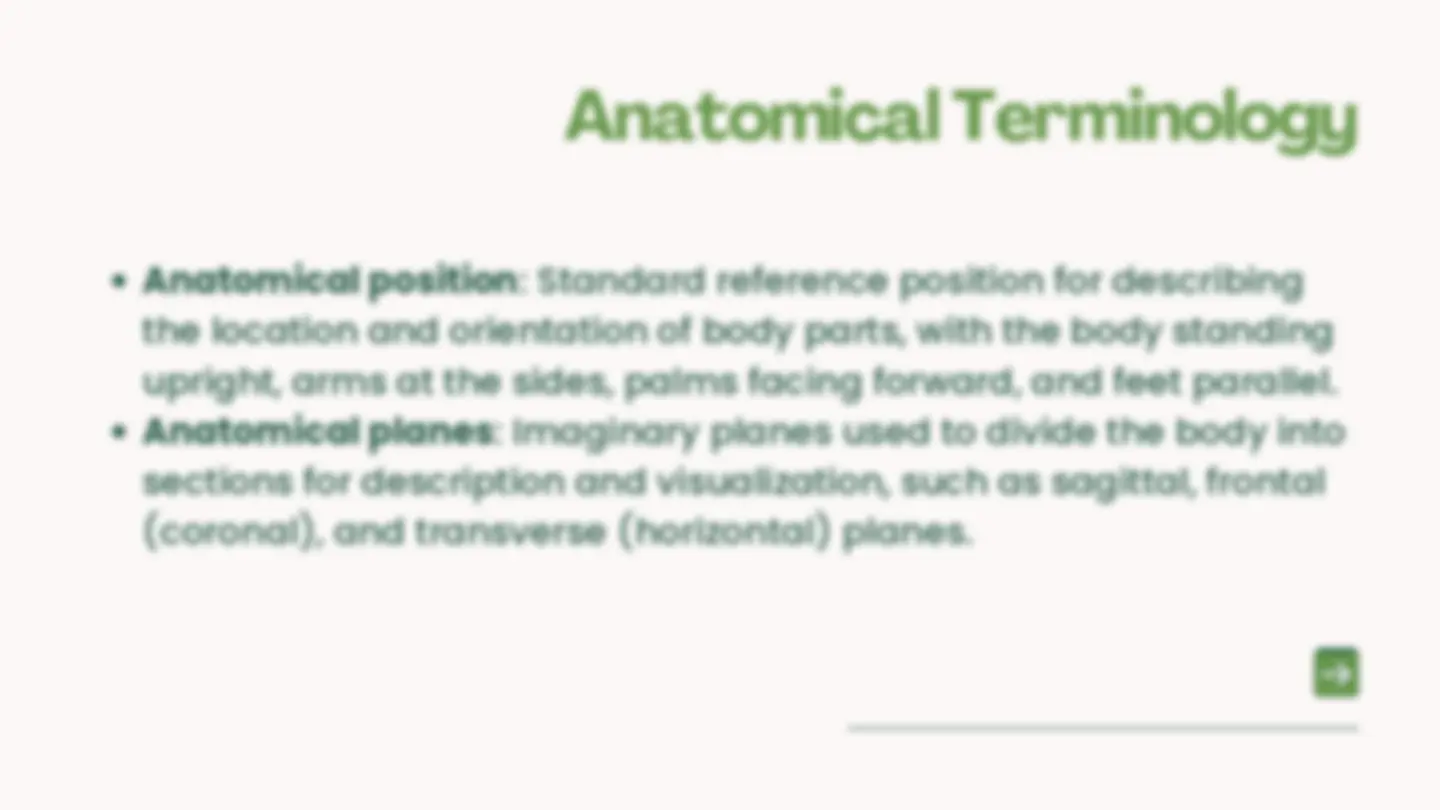
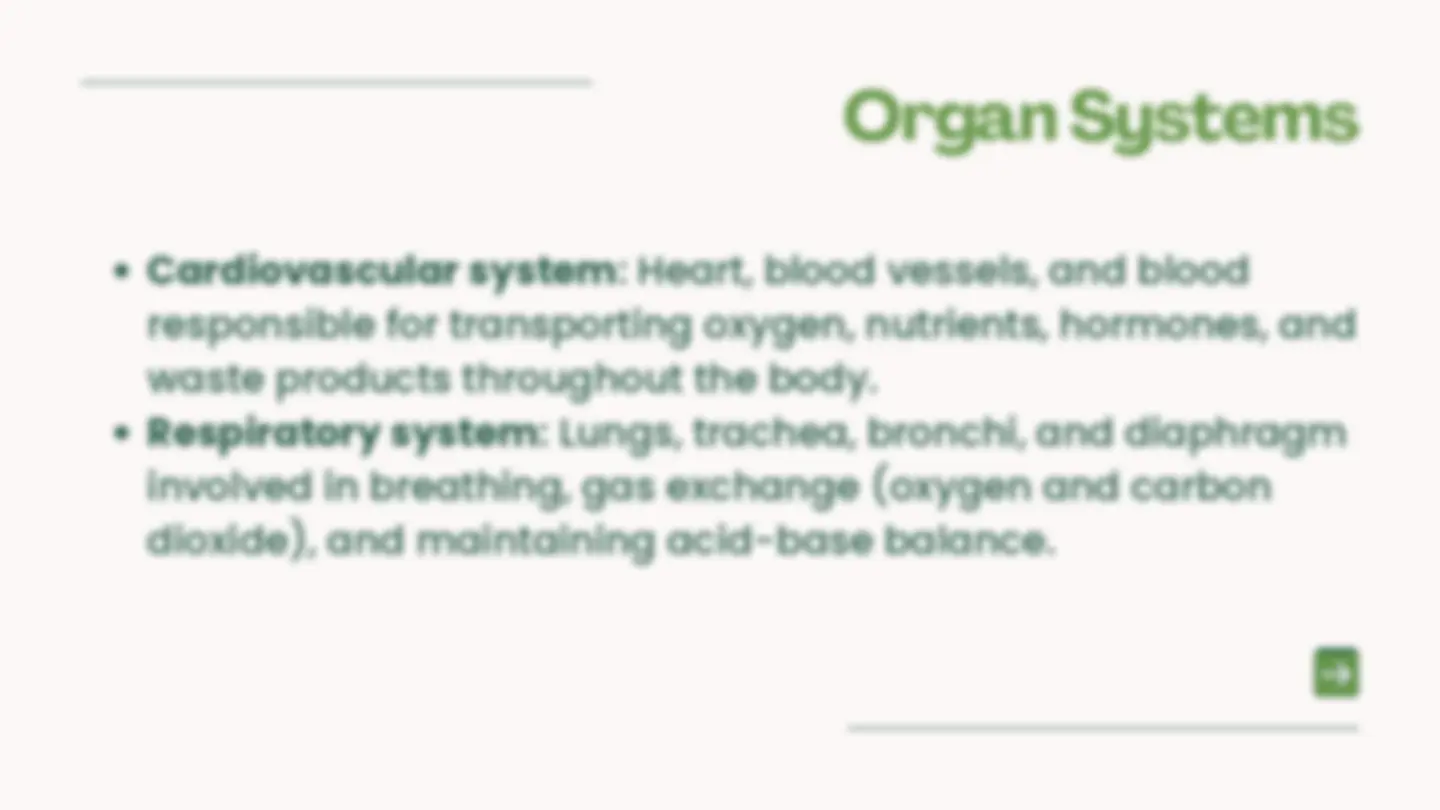
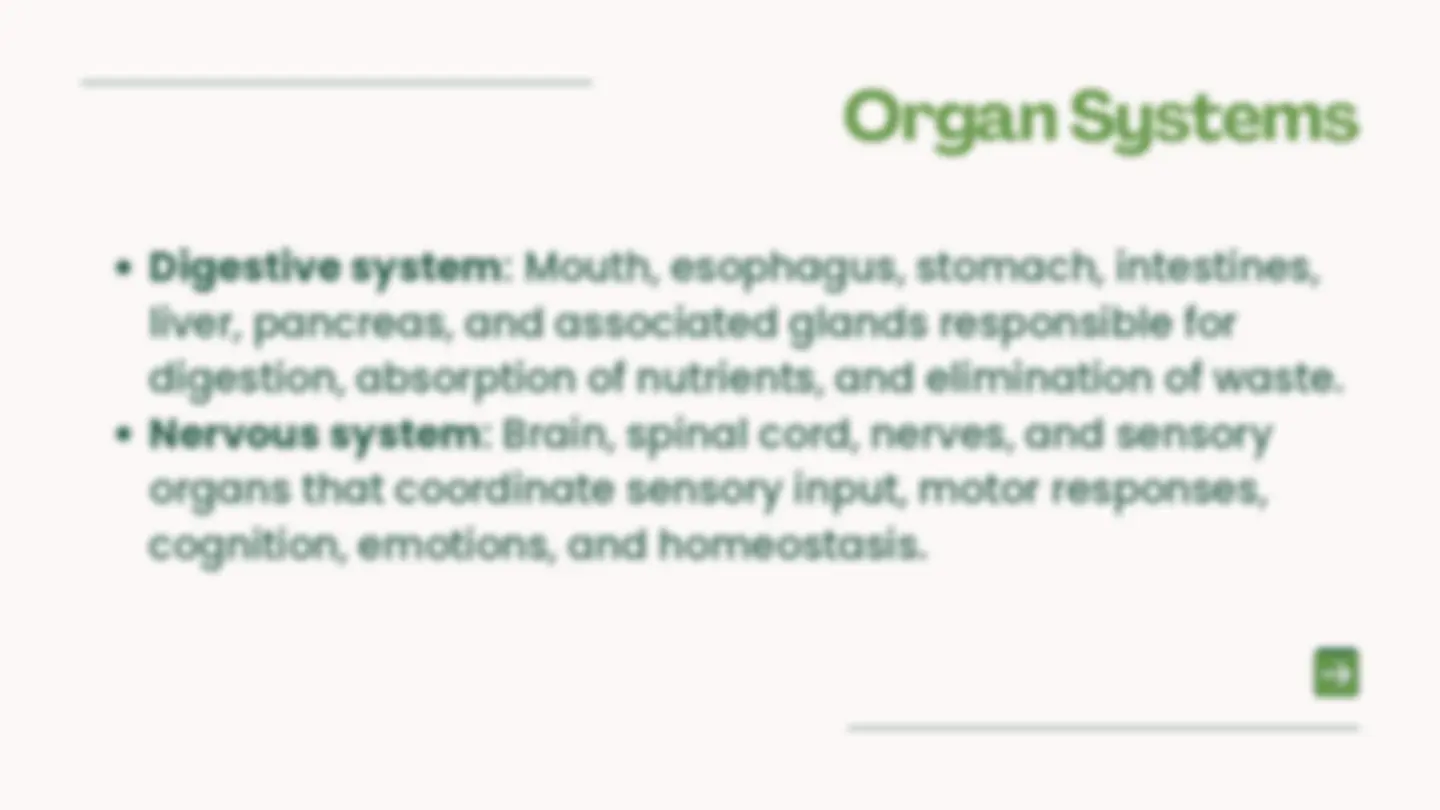
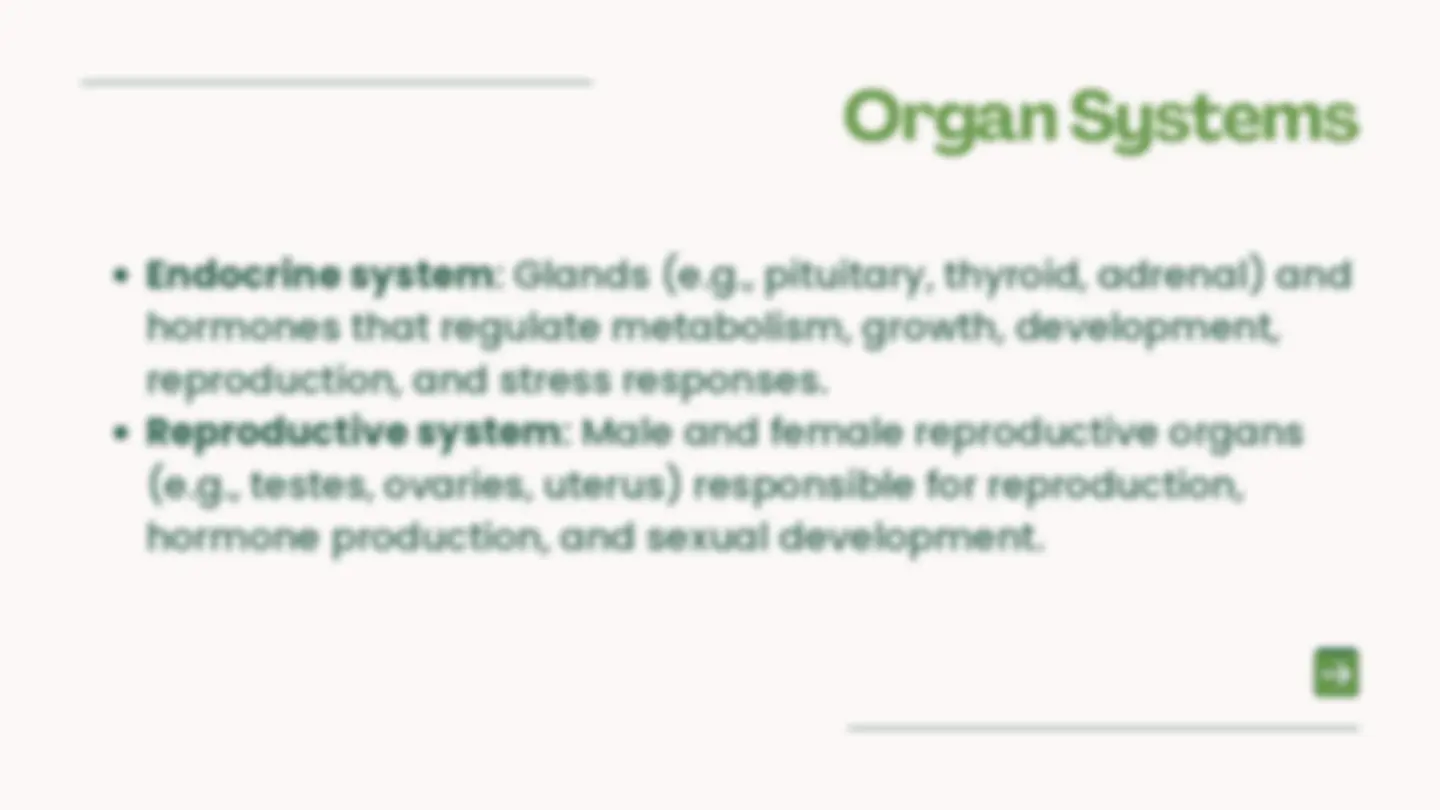
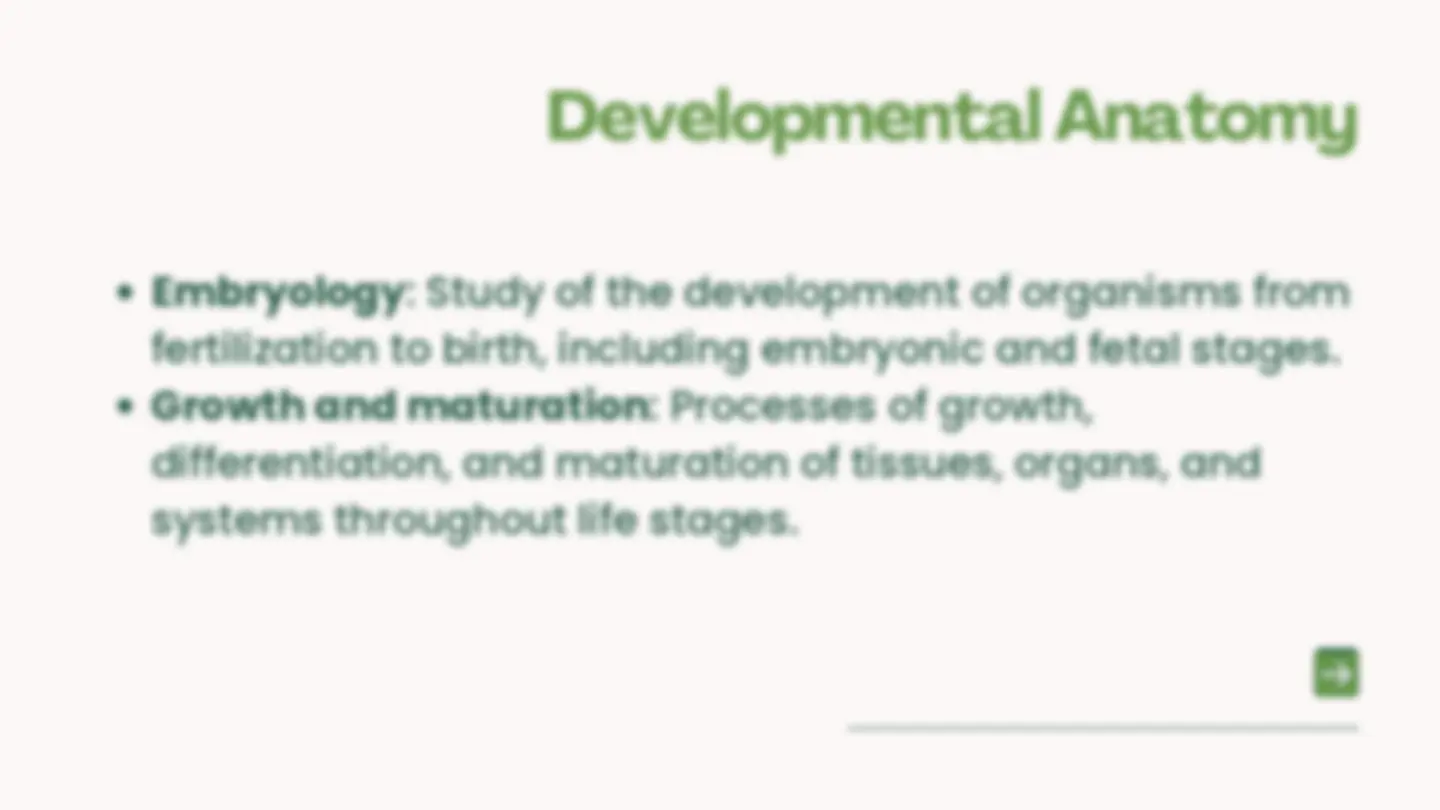
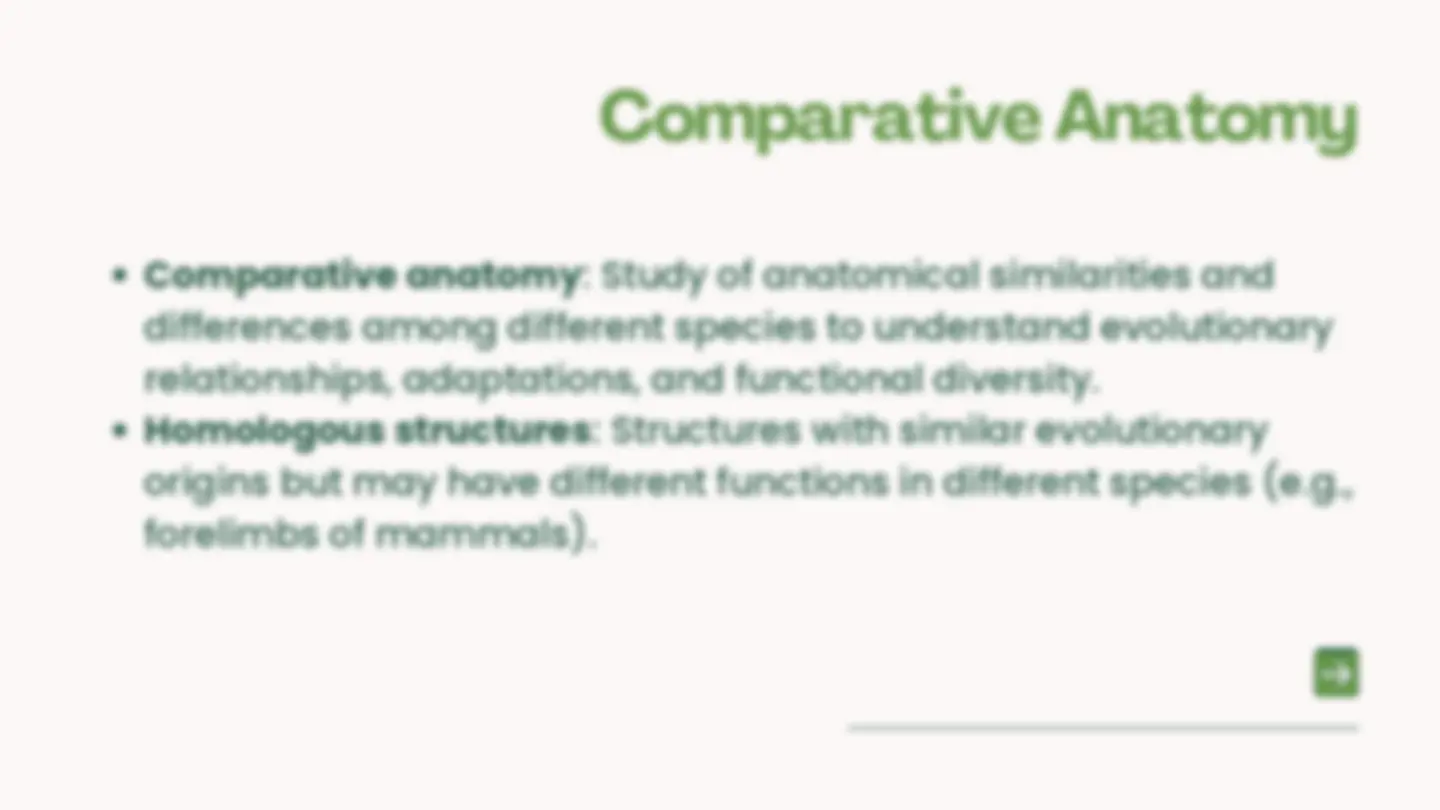
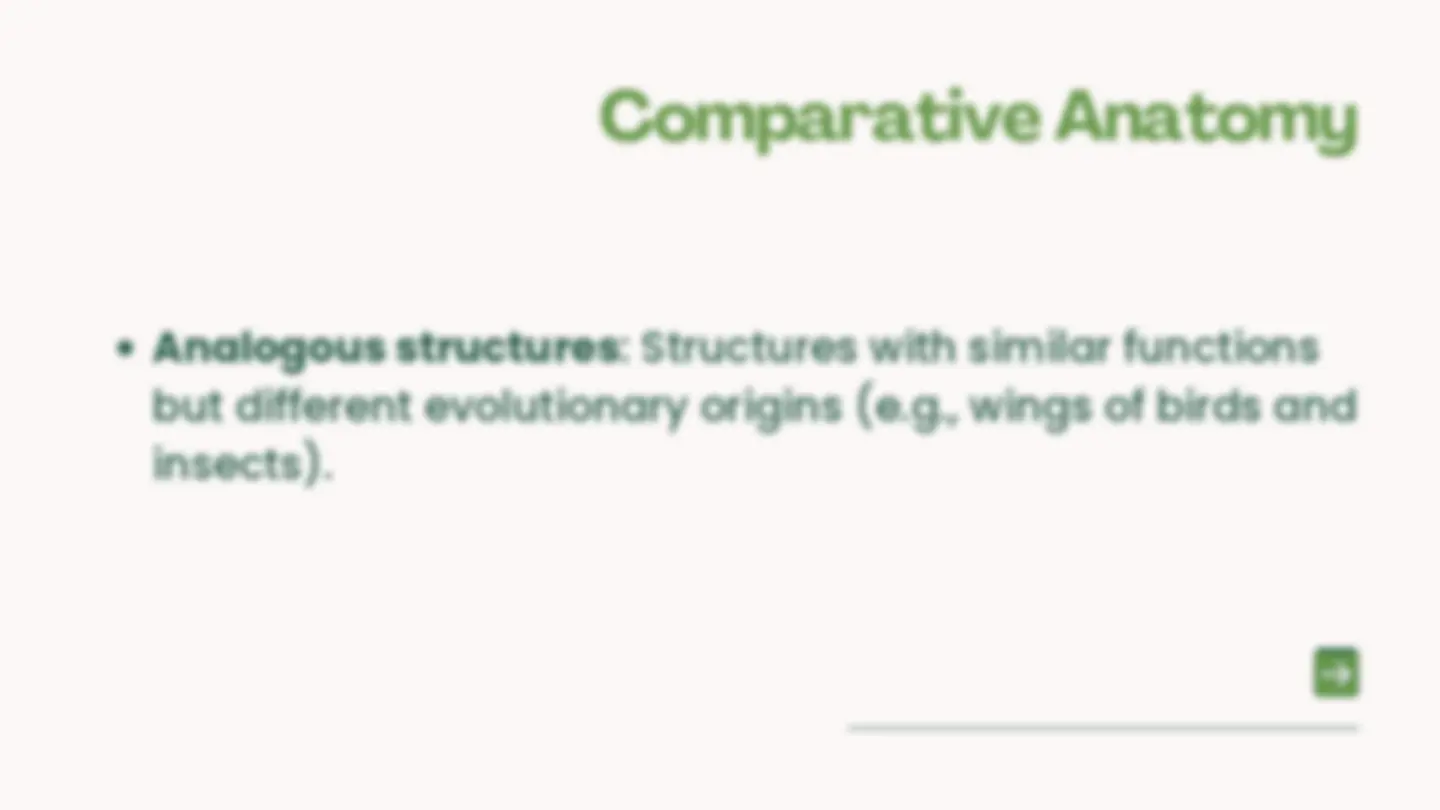
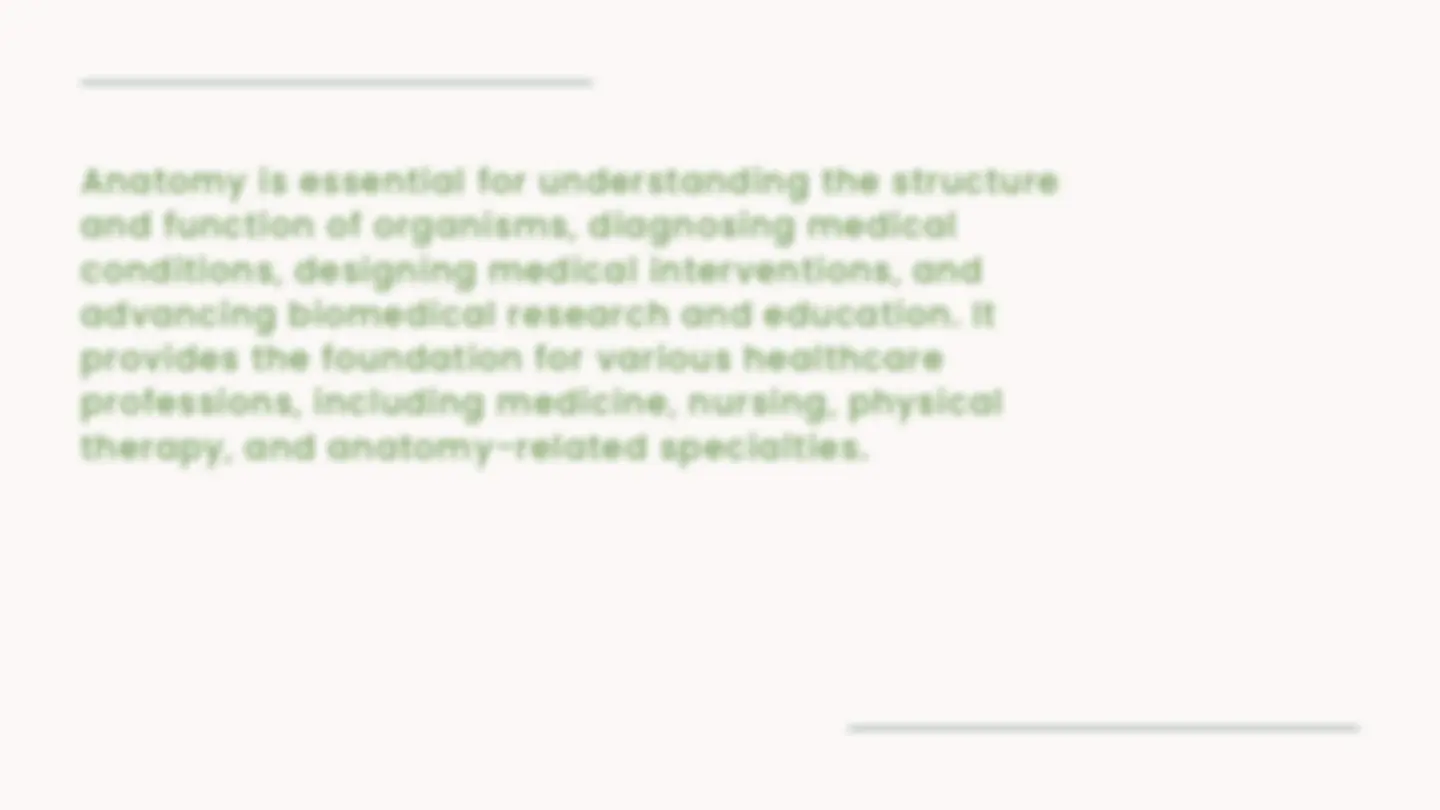



Study with the several resources on Docsity

Earn points by helping other students or get them with a premium plan


Prepare for your exams
Study with the several resources on Docsity

Earn points to download
Earn points by helping other students or get them with a premium plan
Community
Ask the community for help and clear up your study doubts
Discover the best universities in your country according to Docsity users
Free resources
Download our free guides on studying techniques, anxiety management strategies, and thesis advice from Docsity tutors
This presentation provides a comprehensive overview of human anatomy, focusing on the intricate structures and systems that comprise the human body.
Typology: Slides
1 / 19

This page cannot be seen from the preview
Don't miss anything!












Presented by: Abigail Atiwag
Anatomy is the branch of biology concerned with the study of the structure and organization of living organisms. It involves examining the parts, components, and systems that make up organisms, including humans, animals, and plants. Here are some key topics in anatomy:
Systems anatomy : Study of the major systems of the human body, such as the skeletal, muscular, cardiovascular, respiratory, digestive, nervous, endocrine, reproductive, and urinary systems.
Anatomical position : Standard reference position for describing the location and orientation of body parts, with the body standing upright, arms at the sides, palms facing forward, and feet parallel. Anatomical planes : Imaginary planes used to divide the body into sections for description and visualization, such as sagittal, frontal (coronal), and transverse (horizontal) planes.
Skeletal system : Bones, cartilage, ligaments, and joints that provide support, protection, movement, and mineral storage (e.g., calcium and phosphorus). Muscular system : Muscles and tendons that enable movement, maintain posture, generate heat, and support bodily functions.
Cardiovascular system : Heart, blood vessels, and blood responsible for transporting oxygen, nutrients, hormones, and waste products throughout the body. Respiratory system : Lungs, trachea, bronchi, and diaphragm involved in breathing, gas exchange (oxygen and carbon dioxide), and maintaining acid-base balance.
Endocrine system : Glands (e.g., pituitary, thyroid, adrenal) and hormones that regulate metabolism, growth, development, reproduction, and stress responses. Reproductive system : Male and female reproductive organs (e.g., testes, ovaries, uterus) responsible for reproduction, hormone production, and sexual development.
Urinary system : Kidneys, ureters, bladder, and urethra involved in filtering blood, excreting waste products (e.g., urine), and maintaining fluid balance.
Comparative anatomy : Study of anatomical similarities and differences among different species to understand evolutionary relationships, adaptations, and functional diversity. Homologous structures : Structures with similar evolutionary origins but may have different functions in different species (e.g., forelimbs of mammals).
Applied anatomy : Application of anatomical knowledge in medical diagnosis, treatment, surgery, imaging techniques (e.g., MRI, CT scan), and medical education. Pathological anatomy : Study of anatomical changes and abnormalities associated with diseases, injuries, and disorders.
Radiological anatomy : Interpretation of anatomical structures in medical imaging studies, such as X-rays, ultrasounds, and MRIs.